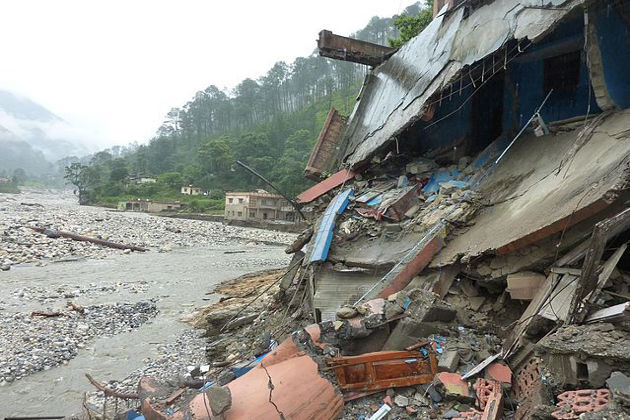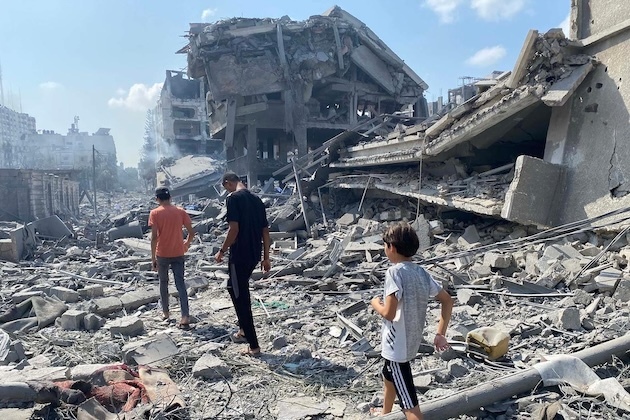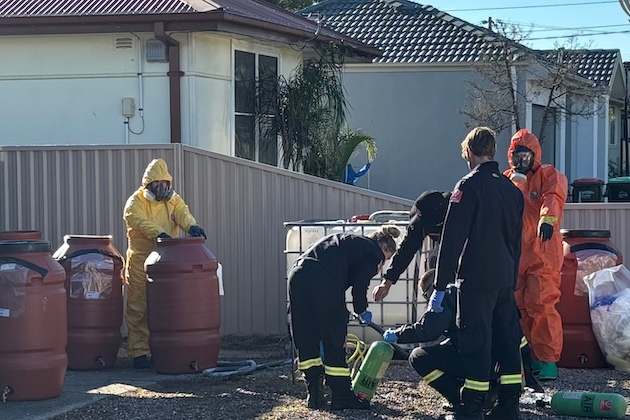2LT International News
Landslides and flooding wreak havoc in India’s Uttarakhand state
Aug 8, 2025
UTTARKASHI, India: Heavy rain hampered rescue efforts in India’s Himalayan state of Uttarakhand on July 6, a day after sudden flooding and landslides killed four people and left dozens missing.
TV news channels showed floodwaters and mud surging down a mountain and crashing into the village, sweeping away houses and roads as people ran for their lives.
According to initial reports, around 20 to 25 hotels and guesthouses, many catering to pilgrims and tourists, were washed away in the deluge. Entire sections of the Dharali market were flattened, with visuals from the disaster zone showing widespread devastation. Torrents of muddy water tore through homes and businesses, leaving behind scenes of ruin and debris. The sheer scale of the destruction has made access difficult for emergency responders.
Three National Disaster Response Force (NDRF) teams have already been sent to the region to support local rescue workers. These teams are working under extremely challenging conditions to locate missing persons, provide medical help, and offer relief to families affected by the flooding. The response effort involves coordination between local authorities, state agencies, and central forces to ensure maximum effectiveness.
Local media and authorities said teams of army and disaster force rescuers struggled to reach Dharali village. This popular tourist spot serves as a pit stop before climbing to the Hindu pilgrimage town of Gangotri. Landslides blocked a major highway, and heavy rain continued to pelt the region.
“The number of missing persons is unknown; however, the relief efforts have continued through the night. We are trying to rescue people and take them to safety,” Harshavardhan, an army colonel leading rescue efforts, said in a post on X (formerly Twitter) shared by the Indian army.
The army camp in Harsil, five miles from the flooded village of Dharali, was also hit by flash floods, and eleven army personnel were missing.
“Additional army columns, along with tracker dogs, drones, logistic drones, earthmoving equipment, etc, have been moved ahead to supplement the resources at Harsil to hasten the efforts,” the army’s central command said in a post on X.
India’s Home Minister Amit Shah has ordered the immediate deployment of specialized disaster response teams to the area. Chief Minister Yogi Adityanath of neighboring Uttar Pradesh has also pledged support for the relief and recovery efforts. The central government has assured state authorities of full assistance for rescue and rehabilitation operations.
Repair work has begun on the crucial Uttarkashi–Gangotri Highway, though assessments of the total infrastructure damage are still ongoing. Rescue teams continue to face obstacles as they work around landslides, washed-out roads, and unstable terrain.
Authorities have urged caution for those planning to travel to the region, as more rain is forecast. The government is closely monitoring the situation, with both state and central teams committed to providing continued support for rescue, relief, and rebuilding efforts.
This tragic event underscores the increasing vulnerability of Himalayan regions to extreme weather during the monsoon season, especially in areas with heavy footfall from pilgrims and tourists. With infrastructure overwhelmed by the natural disaster, restoring connectivity has become a priority.







